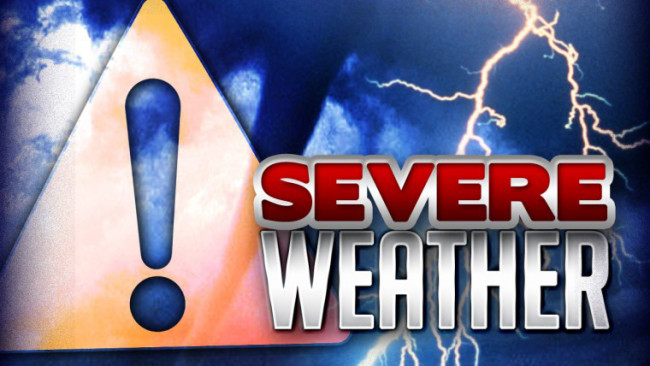Severe weather season is here, and in light of this week touted as Severe Weather Awareness Week, meteorologists share their forecasts for the season.
Mario Valverde, meteorologist in charge at the National Weather Service Shreveport office, says severe thunderstorms are expected for Tuesday but will mainly stay south of northwest Louisiana, predicting a 50 percent chance of storms.
Storms are expected to move into the area overnight with gusty winds up to 30 to 40 miles per hour, with the slight possibility of hail and dangerous lightning. Meteorologists are expecting storms to continue to spread southeast much of Tuesday with a slight chance of severe thunderstorms in the area.
Valverde explained how the systems work and what happens when a storm occurs.
“It’s interesting that in this part of the world, we have severe weather throughout the year,” he said. “The peak time for severe weather is spring – March through May into the first week of June. It’s when we’re changing air masses.”
He says the cooler air masses coming from the north are being pushed out by warmer air masses coming from the Gulf, and when those two masses clash, a thunderstorm or tornado occurs, depending on the strength of the mass.
“The more intense energy for us is in the springtime,” he said. “We actually have another peak from when we transfer into winter – November and December.”
In 2014, 19 tornado warnings were issued in the northwest Louisiana area. In 2015, about 80 were issued, and so far in 2016, only one was issued – the warning issued for the Natchitoches area last Wednesday.
Jason Hansford, Shreveport NWS senior meteorologist, says El Nino in the Pacific is driving the weather pattern coming through the southeast region of the United States.
“We didn’t really experience much in the way of cool temperatures for any long period of time during the winter months,” Hansford said. “We’ve seen above normal temperatures throughout this entire winter. And even through the next 10 days, I don’t see any shots of really cold air coming down this way. This could be a prelude to perhaps an active weather season as we move into the spring months.”
Predictors for an active thunderstorm or tornado season, he says, include above normal temperatures, El Nino, which enhance the chances of rainfall.
“This phenomenon is already beginning to weaken out in the Pacific Ocean, and we should become more neutral as we get into the late spring and early summer months,” he said.
The last phenomenon of El Nino was in 2009, he said.
“We did have a pretty active season, especially during the fall months of that year,” he said. “There will probably be a few events where we will see some extreme weather, with impacts of damaging winds, hail, the possibility for tornados and flash flooding.”
During this winter season, below normal rainfall is being recorded throughout the area, he says, allowing many of the lakes and rivers to recede.
“There’s always going to be the potential for flash flooding each spring,” he said.
The Federal Emergency Management Agency, and the National Oceanic Atmospheric Administration are sponsoring Severe Weather Awareness Week. During this time, agencies use it as an “effort to increase awareness of severe weather and to motivate individuals, families, businesses and communities to take actions that will prepare them in the event of severe weather,” NOAA officials say.

